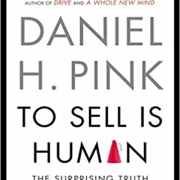Back Matter Blogging
“Writing the end of a story isn’t always the end of the book,” explains Whitney Hill in Writer’s Digest. “Even if there’s no sequel, there’s more to say, and it goes in the back matter.” The “back matter” offers additional value to those readers who enjoyed and engaged with your work enough to read through to the end. That section adds content and helps readers look ahead to the next book.
Hill lists some standard things found in back matter:
- acknowledgement of people who helped in the writing and editing
- personal information about the author
- praise – awards won
- a pitch for the next book
- commenting on a specific change the narrator undergoes as a result of the experience described in the book
But, in addition to these, the editor suggests, authors might like to “call out” situations or new events that are affecting them and their readers.
The Author Learning Center refers to back matter as epilogues, afterwords, or author’s notes.
Can blog content writers use “back matter”? Definitely.
- While, in blogging for business, it’s important to offer enough information in each post to convincingly cover the key theme, in order to cover a topic more comprehensively, the material can be divided into several different blog posts relating to that one issue or problem. The “back matter” would explain that a discussion of other aspect of the issue will be covered in future posts
- Certainly personal information about the business owner or practitioner might be included in the back matter as well. In addition, suggestions as to where to find more in-depth information on the topic (perhaps linked to landing pages) represent a perfect use for back matter.
- Using the back matter to explain how learning the information conveyed in the post actually changed your own (or your blogging client’s) thinking and how that will be reflected in a change in business procedures or in customer service changes.
- At Say It For You, we particularly like the concept of using the back matter to make “a pitch for the next book”. In the age of the Internet, there’s no end, it seems, to the technical information available to consumers. But it falls to us business blog content writers to break all that information down into chewable tablet form! Serving as a “tour guide” or “librarian” for your readers, giving them the benefit of your own searches and information “sorting” is a valuable use for the back matter of blog posts.
The end of a blog post isn’t always the end of the blog!





Follow us online!